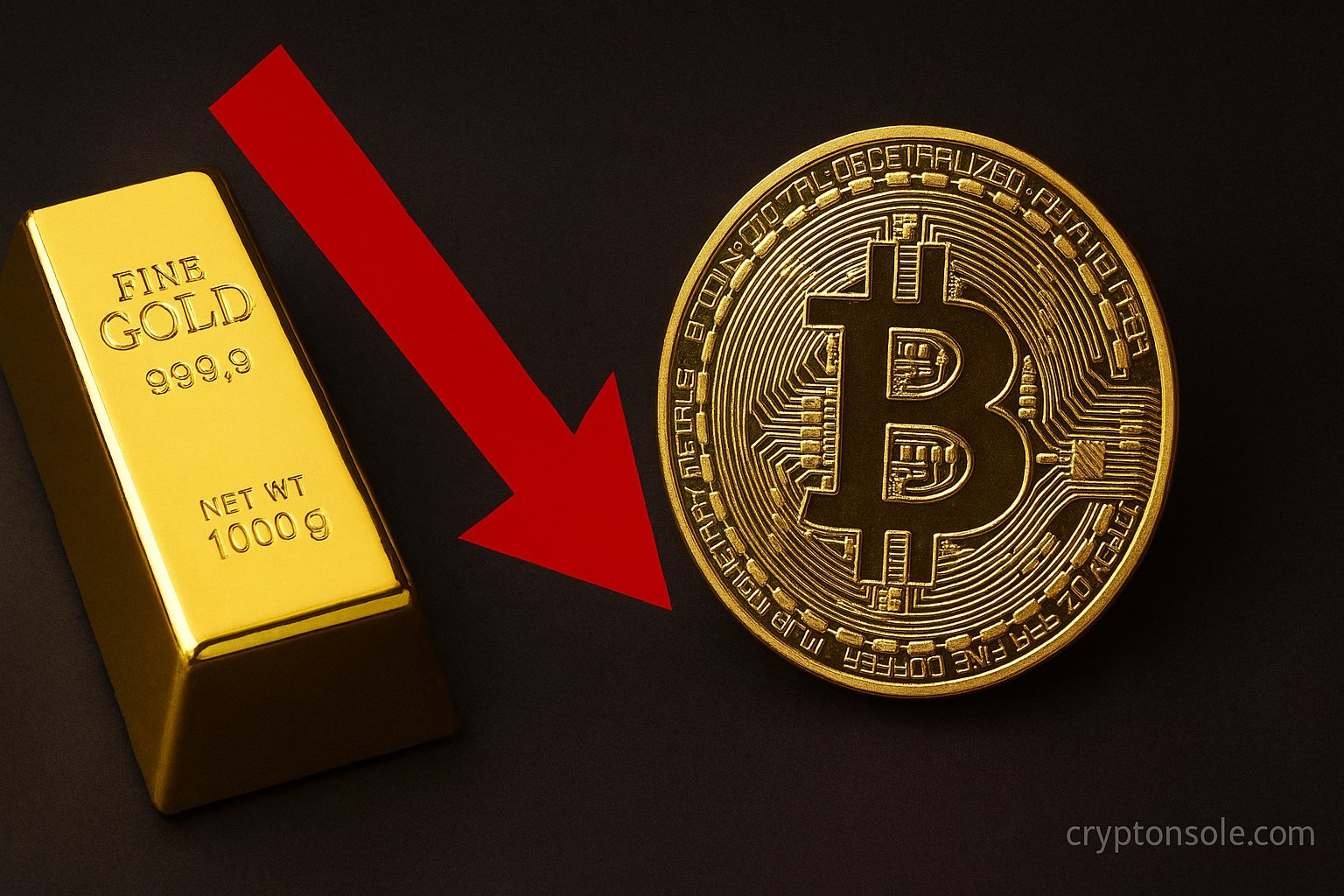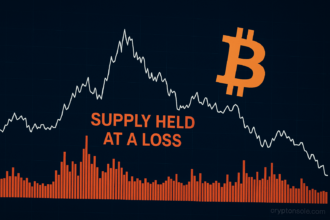After hitting record highs earlier this year, gold’s rally appears to be losing momentum — and some analysts say that could open the door for Bitcoin’s next major leg up as capital rotates away from traditional safe-havens into digital assets.
Gold’s situation: record highs, but signs of fatigue
- Gold recently surpassed $4,000 an ounce, achieving a new historical high as investors sought inflation hedges and safe assets amid global uncertainty.
- However, several reports indicate signs of exhaustion in the gold rally: second-quarter central bank purchases slowed, jewelry demand in key markets dropped, and gold has recently recorded its largest one-day slide in years.
- For example, a World Gold Council-related report noted that although gold is up significantly in 2025, the pace of reserve accumulation and broader demand showed deceleration.
- Investing.com noted that both gold and Bitcoin “lose safe-haven shine” as asset-rotation flows deepen.
The case for Bitcoin: potential beneficiary of rotation
- According to a report by asset-manager Bitwise, even a 3%–4% rotation of capital from gold into Bitcoin could significantly boost Bitcoin’s price and accelerate its next upward wave.
- CryptoSlate wrote that gold’s record-breaking rally appears to be losing steam, while Bitcoin may serve as the next catalyst for capital outflows from traditional assets.
- The “great rotation” theory posits that large pools of capital sitting in gold (estimated in trillions of dollars) could begin reallocating into higher-beta assets like Bitcoin once safe-haven value is perceived to be shifting. Analysts cited by NewsBTC described this dynamic as a tipping point in previous cycles.
Why this could matter
- Liquidity flows matter: With gold’s market cap estimated in the multiple trillions and Bitcoin’s far smaller (~$2 trillion+), even modest rotation from gold to Bitcoin can have outsized5 effects on Bitcoin’s price and supply dynamics. Bitwise’s modelling suggests this scenario.
- Risk-on environment return: If markets shift from a risk-off to risk-on mindset, investors may prefer assets with more upside potential, reducing allocations to traditional hedges and increasing exposure to growth-oriented assets such as Bitcoin.
- Valuation divergence: Some commentary suggests Bitcoin is undervalued relative to equities and other asset classes. If gold peaks and Bitcoin begins to outperform, momentum may accelerate.
- Psychological impact: For many investors, rotation signals are as important as fundamentals — if sentiment shifts away from gold into crypto, behavioral8 momentum may amplify the trend.
Risks & caveats
- Gold may rebound: The rally in gold was driven by inflation, currency devaluation, and geopolitical risk; many of those themes remain intact (e.g., central-bank diversification, NATO tensions). If those drivers re-intensify, gold could regain strength.
- Timing uncertainty: Positioning for a rotation is inherently speculative; even if flows occur, the timing and magnitude are uncertain and could take months to play out.
- Bitcoin volatility & regulatory risk: While rotation may help, Bitcoin remains vulnerable to regulatory shifts, technological execution risks, macroeconomic shocks, and crypto-specific issues (e.g., ETF flows, mining disruptions).
- No guarantee of perfect swap: Investors shifting out of gold may go into stocks, real estate, bonds or other assets—not necessarily Bitcoin. Rotation is a possibility, not a certainty.
What to watch next
- Gold demand signals: Monitor central-bank purchase data, ETF flows into gold, jewelry and industrial demand trends, and any weakening momentum in gold.
- Bitcoin capital flows: Track ETF inflows/outflows, on-chain accumulation, speculation of rotation, and metrics such as Bitcoin-to-gold ratio shifts.
- Risk-appetite indicators: Look at equity market strength/volatility, dollar strength/weakness, credit spreads and other macro variables that influence safe-haven demand.
- Institutional commentary: Reports by major fund-managers, hedge funds, or asset-managers indicating capital reallocation or strategy changes may suggest early rotation.
- Crypto fundamentals: Monitor structural1 indicators in the Bitcoin ecosystem — adoption metrics, ETF approvals, derivatives positioning, open-interest data and supply dynamics.
Bottom line
While gold’s rally has been stunning in 2025, there are emerging signs of fatigue — central-bank buying has slowed, some demand segments have pulled back, and sentiment may be shifting. Many analysts believe this could set the stage for a capital rotation from gold into Bitcoin, potentially fueling the next major leg of Bitcoin’s bull market. That said, rotation is not guaranteed nor timely predictable — and both markets remain exposed to macro, regulatory and technology-specific risks.
MZOKLQQ5











